

Catch Fish with
Mike Ladle
Information Page
SEA FISHING
For anyone unfamiliar with the site always check the FRESHWATER, SALTWATER and TACK-TICS pages. The Saltwater page now extends back as a record of over several years of (mostly) sea fishing and may be a useful guide as to when to fish. The Freshwater stuff is also up to date now. I keep adding to both. These pages are effectively my diary and the latest will usually be about fishing in the previous day or two. As you see I also add the odd piece from my friends and correspondents if I've not been doing much. The Tactics pages which are chiefly 'how I do it' plus a bit of science are also updated regularly and (I think) worth a read (the earlier ones are mostly tackle and 'how to do it' stuff).
Thin or thicklipped mullet, do The Flies Have It?
Mullet are strange fish. They are world-wide in distribution and the many species, although they differ in detail, are generally distinguished by their streamlined, silver-grey, horizontally striped, bodies and a preference for tiny particles of organic detritus and microscopic algae as food. One of the main reasons for their success is that this food is generally available in vast quantities and easy to obtain. However, fine detritus is not easy to imitate or put on a hook and used as bait it would be like finding a hay shaped, needle in a haystack. Recently, I havehad an exchange of emails, on the subject of catching grey mullet, with my good pal Alan Bulmer, who lives in Auckland, New Zealand.
Alan is an all-rounder, and he is particularly keen on fresh and saltwater fly fishing. At the end of his email he wrote the following - NZ fly fishermen are (currently) obsessed with catching grey mullet. Nobody has cracked the code. (despite apparently trying some tactics which UK anglers [= angling writers] seem to find effective). He continues - I used to see grey mullet a lot when I was fishing at high tide, for kingfish, over summer but, given I mostly fish the last couple of hours of ebb tide down to dead low now, I rarely see them. I suspect they follow the high tide in and disappear into the main channels once the tide has turned. When I retire, I shall give it a decent crack. I have tied the flies, just need to focus. Days like today, where there is not a cloud in the sky and the water is clear and calm, are ideal for mullet chasing. However, these days never seem to coincide with the weekend.
As far as I can understand the two common species of mullet in New Zealand are the smallish Yellow Eyed Mullet Which occurs in schools over the bottoms of sandy and muddy bays and estuaries and, like our thinlip, may ascend rivers into freshwater. These fish feed mostly on the seabed, eating benthic detritus, algae and small invertebrates. The larger Flathead mullet grow to an impressive 1.2m and about 12kg. They also live in coastal waters and again enter estuaries and rivers. They school over sand or mud in shallow water. Flatheads also feed on detritus, algae and tiny animals.
All of this, sounds typical of most mullet, everywhere, so they should all be catchable using variations of the methods which we've developed here in Dorset over the past fifty-odd years.
As I have said, the detritus feeding characteristics of most species can be a problem for the angler. In the UK the traditional approaches to catching these fish (we have three, Thicklipped, Thinlipped and Golden) have involved bread-based ground-baits (or shirvy) and the use of fine lines and small hooks, usually baited with bread or, less often, fragments of fish or worm (particularly for the smaller goldens). The traditional tactics (which do work well) include the use of float or leger gear. More recently, anglers have also had some success by attracting fish to bits of floating bread and using fly or float gear and imitation-buoyant-bread as bait. This method works best for thicklips.
Anyway, my pals and I have been catching thick-lipped mullet on fly gear (without bread or other ground-bait) since about the late 1970s, so it set me thinking about why it has worked so well for us (we have caught literally thousands). For almost as long as I have fly fished I have also used baited-spinner tactics (originally introduced by anglers in Christchurch (UK) from methods originating in France) for thin-lipped mullet in my local rivers and estuaries. Used in the right circumstances, both methods are extremely effective and although our thin and thick lipped species can be caught using these methods, the results are often very different.
Mike in his 20's (now 85) with a catch of thick lipped mullet and bass taken on floating maggot flies.
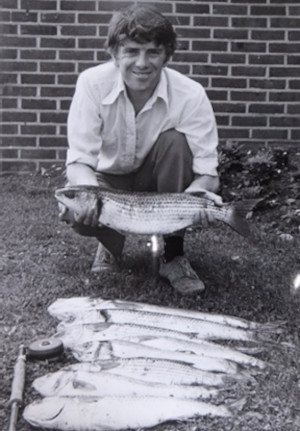
Take fly-fishing first. Mullet are great opportunist feeders. Although algae and detritus form the main part of their diet, if there is a large source of really nutritious food particles available (brewery waste and sewage effluent are more or less unpleasant examples) they will locate it and feed on it. However, there are some natural attractions. On the open coast, thicklips will gather to skim the abundant, surface-floating maggots of Seaweed Flies (as I have sometimes said, the biggest natural source of groundbait available) from the surface film. The fish can then be readily tempted by a dry maggot-fly, particularly if it is small enough, stays afloat, and is adorned with a few live maggots.
Coelopa maggots
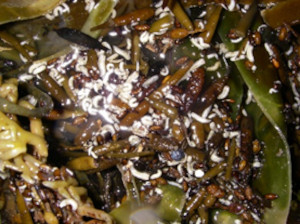
Crude but effective, maggot-baited, polystyrene maggot fly.
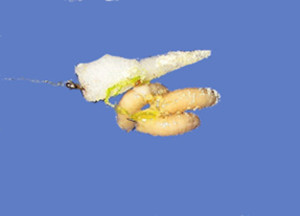
Surface feeding thicklips skimming maggots. Note pink (blood suffused) lips of the fish.
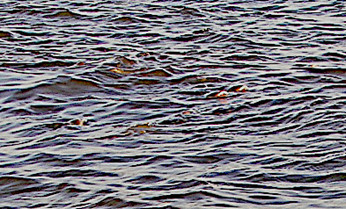
These fish will also feed sub-surface on sea slaters Idotea species. These small, marine woodlice, like the maggots, feed on rotting seaweed and can be unbelievably abundant. In this instance the slaters swim just beneath the surface of the water, so the fish feed there. In both cases (maggots and slaters) fishing may be complicated by (1) the vast amount of food available (often billions of items) (2) the line-fouling presence of loose weed in the water and (3) the variable wind and sea state conditions which may make fishing, hooking and landing fish difficult or impossible. Thicklips, which feed in this way, are much less inclined than their thin-lipped cousins to chase a baited spinner.
Idotea food (decaying seaweed in the margin).
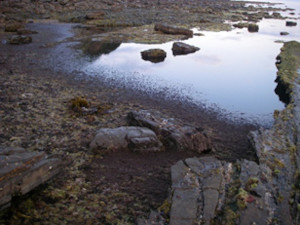
Typical, shoulder to shoulder, density of Idotea, easy meat for mullet.
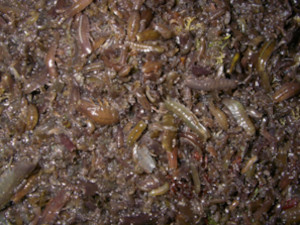
A good mullet caught on an Idotea imitation.
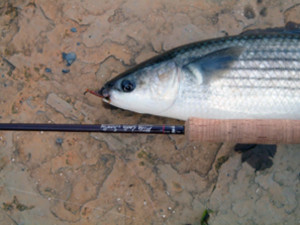
In contrast, to their thicklipped cousins, thinlips often move from estuaries well up into fresh water. Although they will also feed by skimming the water surface, for accumulated scum and trapped insects, and at times can be induced to take surface (dry) flies, they are highly susceptible to a ragworm baited spinner.
So, the question seems to be, would the foreign (New Zealand) mullets succumb to similar tactics? If I lived down-under, my first objective would be to look for suitably abundant and appealing natural food sources which might attract the mullet. Do such feasts exist in foreign parts? For sure there will be seaweed washed up along the shoreline and the ecological equivalents of our seaweed fly larvae and isopods (woodlice) may be present. There could also be night tidal plankton (see below) and other food sources which will attract the mullet. So, what should anglers be looking for?
Firstly, of course, shoals of mullet. The fish are often conspicuous simply, because they are large and easy to see, forming dense shoals in shallow water. In particular, their movements including bow waves, tailing and surface feeding activities may reveal their presence. The abundant mullet foods often attract feeding birds, which may be much more conspicuous at distance than the fish themselves. Finally, any local or widespread accumulations of organic matter, such as cast up or drifting weed, should be investigated. Of course, these things are only a guide and may differ from one part of the world to another.
Weed midden with gulls in the background.
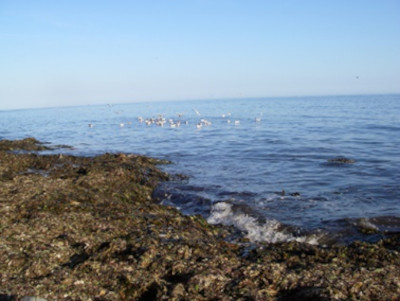
Maggot feeding blackheaded and herring gulls.
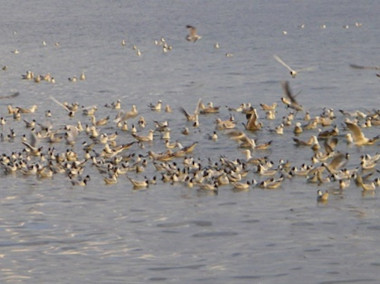
In recent years a few keen fly anglers in the UK have begun to catch estuarine mullet, using techniques involving drifted or slowly retrieved shrimp flies, over sandy or muddy bottoms. The flies used are generally far too small to resemble common shrimps or prawns but could be taken for smaller crustaceans such as the mud dwelling amphipods Corophium. Another mullet food candidate might be the small, sand burrowing genera Bathyporeia or Urothoe? Bathyporeia males are known to form dense swarms, in the surf, over sandy areas as night-tidal-plankton? These could be imitated by little, whitish, translucent, shrimp flies, presented in the margins at dusk.
So much for fly fishing. I have already mentioned the use of baited spinners for mullet fishing. This approach should not be ignored if you want to catch these fish. The reason why this method works is obscure but it is certainly highly effective for thinlips and will also catch thicklips and presumably goldens.
Earlier this year I had a hint about the susceptibilities of foreign mullet from an angler called Justin in the USA who contacted me through The Medlar Press, publishers of Fishing for Ghosts. I think that Justins letter is interesting, so I shall repeat it in full -
"I am watching the DVD Mike Ladle put out about mullet fishing years ago. I have watched it many times and it kept me going as far as learning to catch mullet from freshwater here in Florida. We eat thin lipped mullet (not sure that they are exactly the same species as ours) over here. It took some doing but I finally learned to catch them thanks to this DVD plus a little tweaking of my own in accordance with the different landscape here. I hope Mike is alive and well somewhere."
I replied to Justin, and asked him how he had modified my tactics. He replied -
"Hi Mike, Hot dang you look great. I knew you were probably up in age now and I am glad to see that you are not only still with us but still fishing and doing great. You taught me a thing or two that I shall never forget. Fishing is serious business for us here in Florida, so what I learned from you means a lot to me. I think the only thing I do differently than you is the chum (=groundbait) . I use chicken laying mash crumb mixed with water so that it sinks. It attracts them. Then I usually use a tiny piece of earthworm that they will bite. On a good day it can be done without the chum, as long as you can get the worm in front of them without spooking them."
"The baited spinner is good down here for when they arent as interested. Even when they dont bite it gets their attention and they will follow it just like in your video. I went today and was somewhat sabotaged by the guy" (=alligator) "you see in this picture trying to get in the boat, after he busted up the group of mullet I had feeding on the chum. I had to leave for an hour and come back and they did not behave the same after that. Also pictured is a good mess I caught another day."
Florida mullet habitat with 'nuisance' alligator.
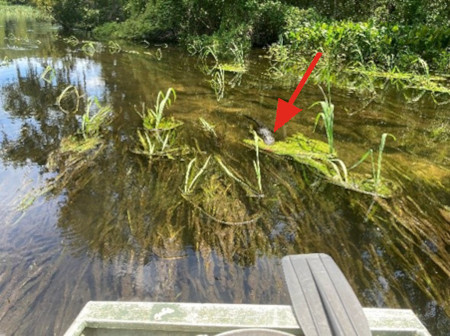
Justin's good bag of mullet on the baited spinner.
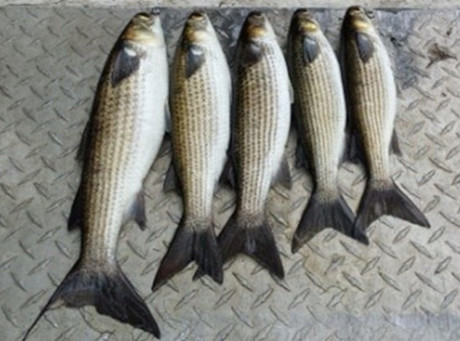
So, the Florida mullet are attracted to bread-type (chicken feed) ground-baits just like ours are. It also appears that the spinner (baited with earthworms?) works well for the mullet in Florida too. In our experimental efforts we have also caught thinlips on spinners baited with earthworms, bits of prawn and clams but ragworm seems to work better for our fish.
PLEASE TELL YOUR TWITTER (X), FACEBOOK, EMAIL FRIENDS ABOUT THESE BOOKS.
THE SECOND WAVE

Written with Steve Pitts this is a SEQUEL TO THE BESTSELLER "Operation Sea Angler" IT'S AVAILABLE ON PAPER FROM -
HOOKED ON BASS
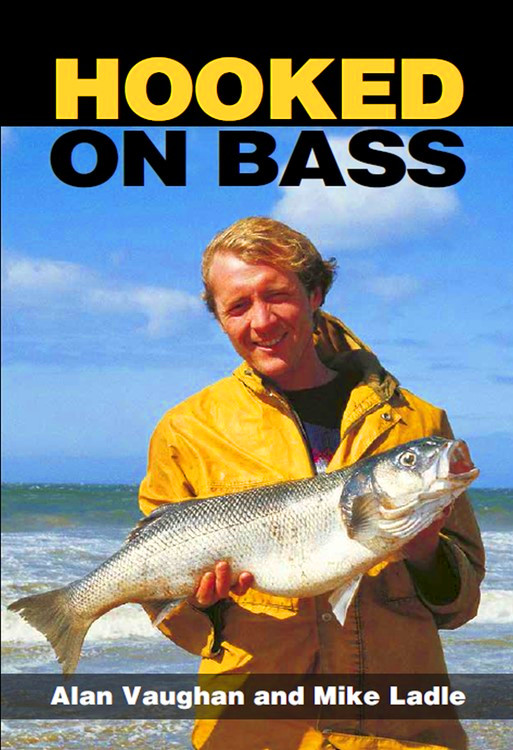
Written with Alan Vaughan. NEW PRINT OF THE ORIGINAL: IN PAPERBACK. Copies available from all good book shops RRP 14:99 -
ANGLING ON THE EDGE
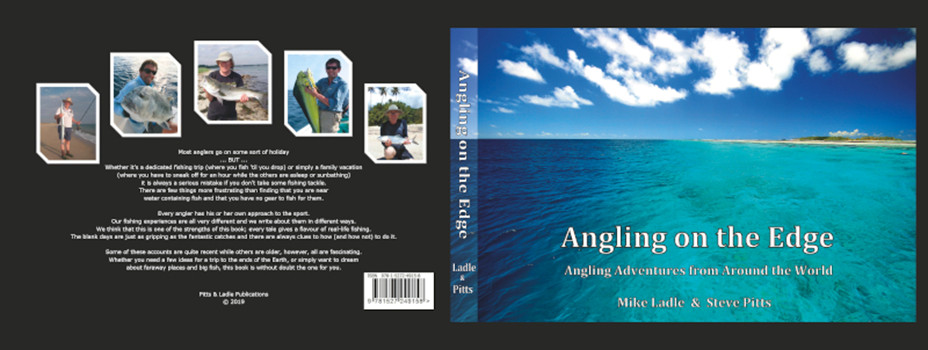
Copies can now be ordered (printed on demand) from Steve Pitts at 34.00, inc. Royal Mail Insured UK Mainland Postage.
To order a book send an E-MAIL to - stevejpitts@gmail.com
FISHING FOR GHOSTS
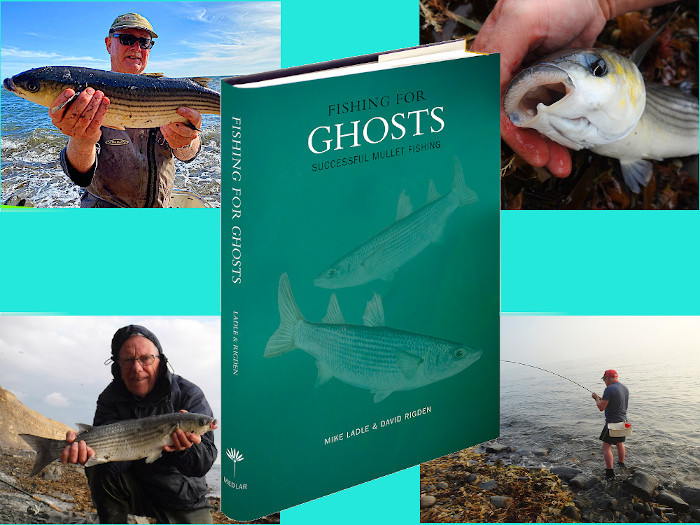
Written with David Rigden. Copies from
If you have any comments or questions about fish, methods, tactics or 'what have you!' get in touch with me by sending an E-MAIL to - docladle@hotmail.com